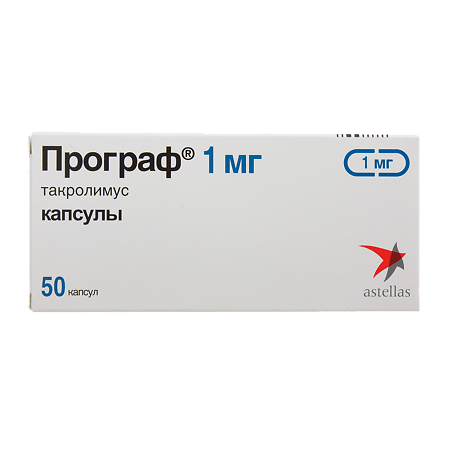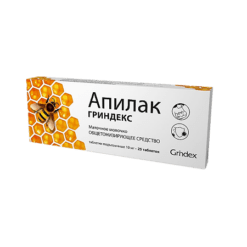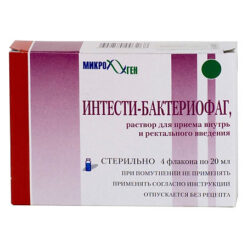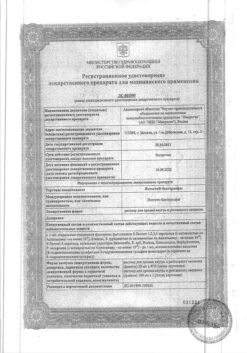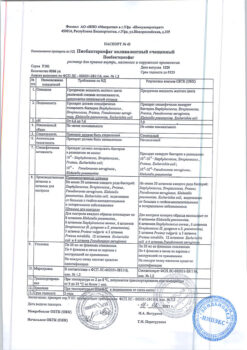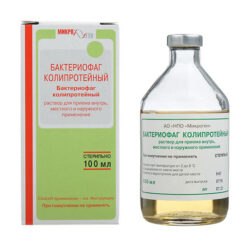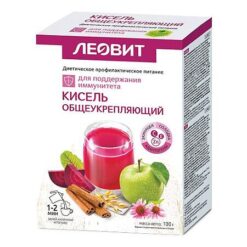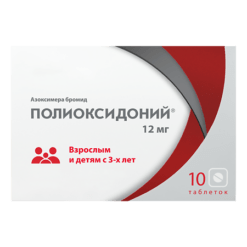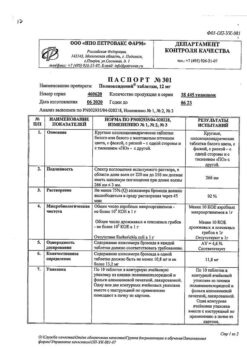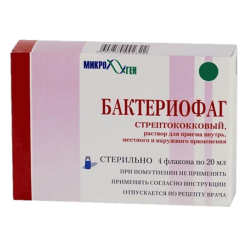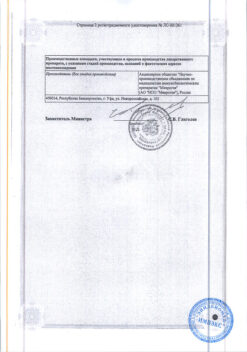No products in the cart.
Prograf, 1 mg capsules 50 pcs
€1.00
Out of stock
(E-mail when Stock is available)
Description
Pharmacotherapeutic group
immunosuppressive agent – calcineurin inhibitor
Pharmacodynamics:
At the molecular level, the effects and intracellular cumulation of tacrolimus are due to binding to the cytosolic protein (FKBP 12). The FKBP 12-tacrolimus complex specifically and competitively inhibits calcineurin to provide calcium-dependent blockade of T-cell signaling pathways and prevent transcription of a discrete series of lymphokine genes.
Tacrolimus is a highly active immunosuppressant. In in vitro and in vivo experiments tacrolimus distinctly reduced the formation of cytotoxic lymphocytes which play a key role in the transplant rejection reaction. Tacrolimus inhibited the formation of lymphokines (interleukin -2 -3 γ-interferon) T-cell activation, interleukin-2 receptor expression, and T-helper-dependent B-cell proliferation.
Pharmacokinetics:
Absorption
In humans, tacrolimus has been found to be rapidly absorbed in the gastrointestinal tract. When taking Prograf® orally the average time to reach Cmax is 1-3 hours. In some patients tacrolimus is absorbed for a long period of time providing a relatively gentle absorption profile. Bioavailability of tacrolimus when ingested Prograf® capsules averages 20-25%. In most patients after liver transplantation on oral administration (030 mg/kg/day) equilibrium concentrations of tacrolimus were reached within 3 days.
The bioequivalence of Prograf® 05 mg capsules 10 mg and 50 mg when taken in equal doses was demonstrated in studies with healthy volunteers.
The highest rate and degree of absorption of tacrolimus is achieved when Prograf® capsules are taken on an empty stomach. The rate and degree of absorption of tacrolimus with food decreases especially in case of high fat content of food.
The effect of food rich in carbohydrates on absorption of tacrolimus is less pronounced. In stable patients after liver transplantation the bioavailability was decreased when Prograf® capsules were taken at the same time with a moderate-fat food (34% of calories). There was also decreased area under the pharmacokinetic curve AUC (27%) of maximum Cmax concentration (50%) and increased tmax (173%) in whole blood.
In a study involving stable patients after kidney transplantation, when Prograf® capsules were taken immediately after a standard breakfast, the effect of food on the bioavailability of tacrolimus was less pronounced. There was a decrease in AUC (by 2-12%) and Cmax (by 15-38%) and an increase in tmax(Ha 38-80%).
The excretion of bile has no effect on the absorption of tacrolimus.
A high correlation between AUC and minimal tacrolimus concentrations in whole blood is observed during therapy with Prograf® capsules when equilibrium state is reached. Therefore, monitoring of minimum tacrolimus concentrations in whole blood may serve as a method to provide an adequate assessment of systemic tacrolimus exposure.
Distribution and elimination
In the systemic blood stream, tacrolimus binds well to erythrocytes. The ratio of tacrolimus concentrations in whole blood to plasma is ~ 20:1. A significant proportion of tacrolimus in plasma (> 988%) is bound to plasma proteins (serum albumin α-1-acid glycoprotein).
Tacrolimus is widely distributed in the body. The steady-state volume of distribution taking into account plasma concentrations is about 1300 l (in healthy people). The same figure calculated from whole blood is on average 476 liters.
Tacrolimus is a substance with low clearance. In healthy people, the average total clearance calculated from whole blood concentrations is 225 l/hour. In adult patients after kidney and heart liver transplantation, clearance values were 41 L/hour 67 L/hour and 39 L/hour, respectively. In children with liver transplantation, total clearance is about 2 times higher than in adult patients with liver transplantation. Low hematocrit and hypoproteinemia contribute to an increase in the unbound fraction of tacrolimus, accelerating tacrolimus clearance. Corticosteroids used in transplantation may also increase metabolic rate and accelerate tacrolimus clearance.
The half-life of tacrolimus is long and variable. In healthy people, the average half-life in whole blood is approximately 43 hours. In adults and children with a liver transplant, the half-life averages 117 hours and 124 hours, respectively, compared to 156 hours in adult patients with a kidney transplant.
Metabolism and biotransformation
Tacrolimus is actively metabolized in the liver primarily by cytochrome P450 CYP3A4. Tacrolimus is metabolized intensively in the intestinal wall. Several metabolites of tacrolimus have been identified. In in vitro experiments it was shown that only one of the metabolites has immunosuppressive activity close to that of tacrolimus. Other metabolites were characterized by weak immunosuppressive activity or its absence. Only one of the tacrolimus metabolites was detected in the systemic bloodstream in low concentrations. Thus, pharmacological activity is almost independent of the metabolites.
Excretion
After oral administration of 14C-labeled tacrolimus, the bulk of the radioactivity was detected in the feces at approximately 2% – with about 1% of tacrolimus detected unchanged in the urine. Consequently, tacrolimus was almost completely metabolized before elimination by the main route of elimination was bile.
Indications
Indications
Prevention of liver kidney or heart allograft rejection.
Treatment of allograft rejection resistant to other immunosuppressive therapy regimens.
Pharmacological effect
Pharmacological effect
Pharmacotherapeutic group
immunosuppressive drug – calcineurin inhibitor
Pharmacodynamics:
At the molecular level, the effects and intracellular accumulation of tacrolimus are due to binding to a cytosolic protein (FKBP 12). The FKBP 12-tacrolimus complex specifically and competitively inhibits calcineurin by providing calcium-dependent blocking of T-cell signaling pathways and preventing the transcription of a discrete number of lymphokine genes.
Tacrolimus is a highly active immunosuppressant. In in vitro and in vivo experiments, tacrolimus clearly reduced the formation of cytotoxic lymphocytes, which play a key role in graft rejection. Tacrolimus suppresses the formation of lymphokines (interleukin-2-3 γ-interferon), the activation of T cells, the expression of the interleukin-2 receptor, and the T-helper-dependent proliferation of B cells.
Pharmacokinetics:
Absorption
It has been established that in the human body, tacrolimus is rapidly absorbed in the gastrointestinal tract. When taking Prograf® orally, the average time to reach Cmax is 1-3 hours. In some patients, tacrolimus is absorbed over a long period of time, providing a relatively flat absorption profile. The bioavailability of tacrolimus when taken orally in Prograf® capsules averages 20-25%. In most liver transplant patients, steady-state tacrolimus concentrations were achieved within 3 days with oral administration (030 mg/kg/day).
In studies involving healthy volunteers, Prograf® 05 mg 10 mg and 50 mg capsules were bioequivalent when taken in equal doses.
The highest rate and extent of absorption of tacrolimus is achieved when Prograf® capsules are taken on an empty stomach. The rate and extent of absorption of tacrolimus when taken simultaneously with food are reduced, especially in the case of high fat content in the food.
The effect of carbohydrate-rich foods on the absorption of tacrolimus is less pronounced. In stable liver transplant patients, bioavailability was reduced when Prograf capsules were taken concomitantly with a moderate fat meal (34% of calories). There was also a decrease in the area under the pharmacokinetic curve AUC (27%) of the maximum concentration of Cmax (50%) and an increase in tmax (173%) in whole blood.
In a study of stable kidney transplant patients taking Prograf capsules immediately after a standard breakfast, the effect of food on the bioavailability of tacrolimus was less pronounced. There was a decrease in AUC (by 2-12%) and Cmax (by 15-38%) and an increase in tmax (Ha 38-80%).
Bile secretion does not affect the absorption of tacrolimus.
During therapy with Prograf® capsules, when steady state is achieved, there is a high correlation between AUC and trough concentrations of tacrolimus in whole blood. Therefore, monitoring trough concentrations of tacrolimus in whole blood can serve as a method to provide an adequate assessment of systemic exposure to tacrolimus.
Distribution and Elimination
In the systemic circulation, tacrolimus binds well to red blood cells. The ratio of tacrolimus concentrations in whole blood and plasma is ~20:1. A significant proportion of tacrolimus in plasma (>988%) is bound to plasma proteins (serum albumin α-1-acid glycoprotein).
Tacrolimus is widely distributed in the body. The steady-state volume of distribution, taking into account plasma concentrations, is about 1300 l (in healthy people). The same figure calculated for whole blood is on average 476 liters.
Tacrolimus is a substance with low clearance. In healthy people, the average total clearance calculated from whole blood concentrations is 225 l/h. In adult patients after liver, kidney and heart transplantation, clearance values were 41 l/hour, 67 l/hour and 39 l/hour, respectively. In children with liver transplants, the total clearance is approximately 2 times higher than in adult patients with liver transplants. Low hematocrit and hypoproteinemia contribute to an increase in the unbound fraction of tacrolimus, accelerating the clearance of tacrolimus. Corticosteroids used during transplantation may also increase the metabolic rate and accelerate the clearance of tacrolimus.
The half-life of tacrolimus is long and variable. In healthy individuals, the average half-life in whole blood is approximately 43 hours. In adult and pediatric liver transplant patients, the half-life averages 117 hours and 124 hours, respectively, compared with 156 hours in adult kidney transplant patients.
Metabolism and biotransformation
Tacrolimus is extensively metabolized in the liver mainly by cytochrome P450 CYP3A4. Metabolism of tacrolimus occurs intensively in the intestinal wall. Several metabolites of tacrolimus have been identified. In vitro experiments showed that only one of the metabolites has immunosuppressive activity close to that of tacrolimus. Other metabolites had weak or no immunosuppressive activity. Only one of the metabolites of tacrolimus was found in the systemic circulation in low concentrations. Thus, the pharmacological activity is practically independent of metabolites.
Excretion
After oral administration of 14C-labeled tacrolimus, the main proportion of radioactivity was found in feces, approximately 2%; in urine, about 1% of tacrolimus was determined unchanged. Therefore, tacrolimus was almost completely metabolized before elimination; the main route of elimination was bile.
Special instructions
Special instructions
During the initial period after transplantation, routine monitoring of the following parameters should be performed: blood pressure, ECG, neurological and ophthalmological status, fasting blood glucose levels, electrolytes (especially potassium), liver and kidney function, clinical blood test parameters, coagulation parameters and plasma proteins.
As with other immunosuppressive drugs, due to the potential risk of developing malignant changes in the skin, you should limit exposure to sunlight and UV radiation by protecting the skin with clothing and using creams with a high protection factor.
If accidentally administered into an artery or perivascularly, Prograf ® 5 mg/ml concentrate for infusion may cause irritation at the injection site.
Prograf®, a 5 mg/mL concentrate for infusion, contains polyoxyethylene hydrogenated castor oil, which has been noted to cause anaphylactic reactions. The risk of an anaphylactic reaction can be reduced by administering reconstituted Prograf® concentrate for infusion at 5 mg/ml at a low rate or by pre-administering an antihistamine.
Prograf®, capsules 0.5; 1 and 5 mg
Tacrolimus is not compatible with polyvinyl chloride (PVC). If the contents of the capsules must be administered through a nasogastric tube, the latter should not contain polyvinyl chloride.
Prograf®, concentrate for solution for infusion, containing 5 mg/ml
Tacrolimus is absorbed by polyvinyl chloride plastic. Tubing, syringes and any other equipment used for the preparation and administration of Prograf®, infusion concentrate containing 5 mg/ml, must not contain polyvinyl chloride.
Impact on the ability to drive a car and operate machinery
Tacrolimus may cause visual and neurological disturbances. Patients who develop such disorders should not drive or operate machinery. This effect may be increased when Prograf® is taken concomitantly with alcohol.
Active ingredient
Active ingredient
Tacrolimus
Composition
Composition
Active substance:
tacrolimus 1 mg
Pregnancy
Pregnancy
Results from preclinical and human studies indicate that the drug may cross the placenta.
Since the safety of Prograf in pregnant women has not been well established, this drug should not be prescribed to them unless the potential benefit of treatment justifies the potential risk to the fetus.
Preclinical and human studies indicate that tacrolimus is excreted in breast milk.
Since undesirable effects on newborn babies cannot be ruled out, women taking Prograf should not breastfeed.
Contraindications
Contraindications
Known hypersensitivity to tacrolimus or other macrolides.
Known hypersensitivity to polyoxyethylated hydrogenated castor oil (HCO-60) or structurally related components.
Side Effects
Side Effects
Due to the characteristics of the underlying disease and the large number of drugs used simultaneously after transplantation, the profile of adverse reactions of immunosuppressants is difficult to accurately determine.
Many of the adverse reactions presented below are reversible and/or decrease with dose reduction. Oral administration is associated with a lower risk of adverse reactions compared to intravenous administration of the drug. Within each frequency group, adverse events are presented in order of decreasing severity. Adverse reactions classified by organs and systems are listed below in descending order of detection frequency: very often (> 1/10) often (from > 1/100 to 1/1000 to _1/10,000 to < 1/1,000) very rarely (< 1/10,000) frequency unknown (to establish the frequency of which there is insufficient data).
Cardiac disorders: common: ischemic coronary disorders, tachycardia; infrequently: ventricular arrhythmias and cardiac arrest, heart failure, cardiomyopathy, ventricular hypertrophy, supraventricular arrhythmias, palpitations, pathological ECG indicators, disturbances in the rhythm and frequency of heart contractions and pulse; rarely: pericardial effusion; very rarely: pathological changes on the echocardiogram, prolongation of the QT interval on the electrocardiogram, disturbance of the heart rhythm of the “pirouette” type (bidirectional fusiform ventricular tachycardia). Vascular disorders very common: arterial hypertension;
often: bleeding, thromboembolic and ischemic complications, peripheral circulatory disorders, vascular hypotension; uncommon: heart attack, deep vein thrombosis of the extremities, shock.
Blood and lymphatic system disorders
often: anemia leukopenia thrombocytopenia leukocytosis decreased or increased hemoglobin and/or hematocrit levels abnormalities in the analysis of red blood cells; uncommon: coagulopathy, deviations in coagulogram parameters, pancytopenia, neutropenia; rarely: thrombotic thrombocytopeic purpura, hypoprothrombinemia; frequency unknown: partial red cell aplasia agranulocytosis hemolytic anemia.
Nervous system disorders
very often: tremor, headache; often: convulsions, disturbances of consciousness, paresthesia and dysesthesia, peripheral neuropathies, dizziness, writing disorders, disorders of the nervous system; uncommon: coma, hemorrhages in the central nervous system and cerebrovascular accidents, paralysis and paresis, encephalopathy, speech and articulation disorders, amnesia; rarely: increased muscle tone; very rarely: myasthenia gravis.
Violations of the organ of vision often: blurred vision, photophobia, eye diseases, visual disturbances; uncommon: cataract; rare: blindness.
Hearing and labyrinthine disorders often: noise (ringing) in the ears; uncommon: hearing loss; rarely: neurosensory deafness; very rare: hearing impairment.
Disorders of the respiratory system of the chest and mediastinum
often: shortness of breath pulmonary parenchymal disorders pleural effusion pharyngitis cough nasal congestion rhinitis; uncommon: respiratory failure; respiratory tract disorders; asthma; rare: acute respiratory distress syndrome.
Gastrointestinal disorders
very common: diarrhea, nausea; often: inflammatory diseases of the gastrointestinal tract, gastrointestinal ulcers and perforations, gastrointestinal bleeding, stomatitis and ulceration of the oral mucosa, ascites, vomiting, gastrointestinal and abdominal pain, dyspepsia, constipation, flatulence, feelings of bloating and distension in the abdomen, loose stools, symptoms of disorders of the gastrointestinal tract; uncommon: paralytic intestinal obstruction (paralytic ileus), peritonitis, acute and chronic pancreatitis, increased levels of amylase in the blood, gastroesophageal reflux disease, impaired gastric evacuation function; rarely: subileus pancreatic pseudocysts.
Renal and urinary tract disorders
very often: impaired renal function;
often: renal failure acute renal failure oliguria acute tubular necrosis toxic nephropathy urinary syndrome disorders of the bladder and urethra; uncommon: anuria, hemolytic uremic syndrome; very rare: nephropathy, hemorrhagic cystitis.
Skin and subcutaneous tissue disorders
often: itching, rash, alopecia, acne, hyperhidrosis;
uncommon: photosensitivity dermatitis;
rarely: toxic epidermal necrolysis (Lyell’s syndrome);
very rare: Stevens-Johnson syndrome.
Disorders of the musculoskeletal and connective tissue often: arthralgia muscle cramps pain in the extremities back pain; uncommon: joint disorders.
Endocrine system disorders
rarely: hirsutism.
Metabolic and nutritional disorders
very often: hyperglycemia, diabetes mellitus, hyperkalemia; often: hypomagnesemia, hypophosphatemia, hypokalemia, hypocalcemia, hyponatremia, hypervolemia, hyperuricemia, decreased appetite, anorexia, metabolic acidosis, hyperlipidemia, hypercholesterolemia, hypertriglyceridemia, electrolyte disturbances; uncommon: dehydration, hypoproteiemia, hyperphosphatemia, hypoglycemia.
Immune system disorders
Allergic and anaphylactic reactions have been observed in patients taking tacrolimus.
Infectious and parasitic diseases
During therapy with tacrolimus, as with other immunosuppressants, the risk of local and generalized infectious diseases (viral bacterial fungal progozoans) increases. The course of previously diagnosed infectious diseases may worsen. Cases of nephropathy associated with the BK virus as well as progressive multifocal leukoencephalopathy (PML) associated with the JC virus have been observed during immunosuppressive therapy, including therapy with Prograf®.
Intoxication injuries and complications of manipulations are common: primary graft dysfunction.
In practice, errors in the use of tacrolimus drugs have been observed, including unjustified, unintentional or uncontrolled transfer of patients from one dosage form of tacrolimus (standard or extended-release) to another, as well as associated cases of transplant rejection (frequency cannot be estimated based on available data).
Benign malignant and unspecified neoplasms (including cysts and polyps)
Patients receiving immunosuppressive therapy have a higher risk of malignancy. When using tacrolimus, the occurrence of both benign and malignant neoplasms, including Epstein-Barr virus-associated lymphoproliferative diseases and skin cancer, was noted. General disorders and disorders at the injection site often: asthenia, febrile states, swelling, pain and discomfort, increased activity of alkaline phosphatase in the blood, increased body weight, disturbances in the perception of body temperature;
infrequently: multiple organ failure, flu-like syndrome, disturbance in the perception of ambient temperature, a feeling of constriction in the chest, a feeling of anxiety, deterioration in well-being, increased activity of lactate dehydrogenase in the blood, loss of body weight; rarely: thirst, loss of balance (falling), feeling of stiffness in the chest, difficulty moving, ulcer; very rarely: increase in adipose tissue mass.
Disorders of the liver and biliary tract
often: increased levels of liver enzymes, liver dysfunction, pathological changes in liver function tests, cholestasis and jaundice, liver cell damage and hepatitis, cholangitis;
rarely: thrombosis of the hepatic artery, obliterating endophlebitis of the hepatic veins; very rare: liver failure, stenosis of the hepatic ducts.
Genital and breast disorders: uncommon: dysmenorrhea and uterine bleeding.
Mental disorders are very common: insomnia; often: anxiety, confusion and disorientation depression depressed mood affective disorders nightmares hallucinations mental disorders; uncommon: psychotic disorders.
Interaction
Interaction
Metabolic interactions Tacrolimus in the systemic circulation is metabolized by the hepatic cytochrome CYP3A4. When taken orally, tacrolimus is also metabolized by the intestinal cytochrome CYP3A4 system.
Concomitant use of drugs or herbs with known inhibitory or inducing effects on CYP3A4 may respectively increase or decrease tacrolimus blood concentrations. To maintain adequate and constant exposure to tacrolimus when co-administered with drugs that can alter the activity of CYP3A4 or have other effects on the pharmacokinetics of tacrolimus, it is recommended to monitor the concentration of tacrolimus in the blood and, if necessary, adjust the dose or discontinue the drug. The QT interval (using electrocardiography), renal function and possible side effects should also be monitored.
Metabolism inhibitors
Based on clinical experience, it has been established that the following drugs can significantly increase the concentration of tacrolimus in the blood: antifungals (ketoconazole fluconazole itraconazole voriconazole) macrolide antibiotics (erythromycin) HIV protease inhibitors (ritonavir nelfinavir saquinavir) or hepatitis C virus protease inhibitors (for example telaprevir boceprevir). When these drugs are given with tacrolimus, a dose reduction of tacrolimus may be necessary in almost all patients. Less pronounced drug interactions were observed with the simultaneous use of tacrolimus drugs with clotrimazole clarithromycin josamycin nifedipine nicardipine diltiazem verapamil amiodarone danazol ethinyl estradiol omeprazole and nefazodone.
In vitro studies have shown that the following substances are potential inhibitors of tacrolimus metabolism: bromocriptine cortisone dapsone ergotamine gestodene lidocaine mephenytoin miconazole midazolam nilvadipine norethisterone quinidine tamoxifen (triacetyl)olsandomycin. It is recommended to avoid grapefruit juice due to the possibility of increasing tacrolimus levels in the blood. Lansoprazole and cyclosporine may potentially inhibit the CYP3A4-mediated metabolism of tacrolimus and increase its concentration in the blood.
Metabolism inducers Based on clinical experience, it has been established that the concentration of tacrolimus in the blood can be significantly reduced by the following drugs: rifampicin phenytoin St. John’s wort (Hypericum perforatum). When these drugs are co-administered with tacrolimus, increased doses of Prograf may be required in almost all patients.
Clinically significant interactions have been observed with phenobarbital.
Corticosteroids in maintenance doses usually reduce tacrolimus blood concentrations. High doses of prednisolone or methylprednisolone used to treat acute rejection may increase or decrease tacrolimus blood levels.
Carbamazepine metamizole and isoniazid may reduce tacrolimus blood concentrations. Effect of tacrolimus on the metabolism of other drugs Tacrolimus inhibits CYP3A4 and, when taken concomitantly, may affect drugs metabolized by the CYP3A4 system. The half-life of cyclosporine increases when used concomitantly with tacrolimus. Synergistic/additive nephrotoxic effects may also be observed. For these reasons, concomitant use of cyclosporine and tacrolimus is not recommended, and caution should be exercised when prescribing tacrolimus to patients who have previously taken cyclosporine.
Tacrolimus increases the level of phenytoin in the blood.
Since tacrolimus may reduce the clearance of hormonal contraceptives, it is important to exercise caution when selecting contraceptives.
Data on the interaction of tacrolimus with statins are limited. Clinical observations allow us to conclude that when taken simultaneously with tacrolimus, the pharmacokinetics of statins does not change.
Experimental studies in animals have shown that tacrolimus has the potential to reduce the clearance and increase the half-life of pentobarbital and phenazone.
Other potential interactions increasing systemic exposure of tacrolimus
Prokinetic agents (metoclopramide cisapride). Cimetidine. Magnesium and aluminum hydroxide.
Other potentially adverse drug interactions Concomitant use of tacrolimus with drugs that have nephro- or neurotoxicity (for example, aminoglycosides, gyrase inhibitors, vancomycin, cotrimoxazole, non-steroidal anti-inflammatory drugs, hapciclovir, acyclovir) may enhance these effects.
Increased nephrotoxicity was observed as a result of concomitant use of tacrolimus with amphotericin B and ibuprofen.
Since tacrolimus may promote or worsen hyperkalemia, the use of high doses of potassium or potassium-sparing diuretics (amiloride triamterene spironolactone) should be avoided.
Immunosuppressants may alter the body’s response to vaccination: vaccination may be less effective during treatment with tacrolimus. The use of live attenuated vaccines should be avoided.
Protein binding Tacrolimus is actively bound to plasma proteins. The possible competitive interaction of tacrolimus with drugs with a high affinity for plasma proteins (hysterical anti-inflammatory drugs, oral anticoagulants, oral antidiabetic drugs) should be taken into account.
Incompatibility
Overdose
Overdose
Information on overdose is limited. Several episodes of accidental overdose have been reported in patients taking tacrolimus medications. Symptoms included tremor headache nausea vomiting infection urticaria lethargy increased blood urea nitrogen, serum creatinine and alanine aminotransferase.
There are currently no antidotes for tacrolimus. In case of overdose, it is necessary to take standard measures and carry out symptomatic treatment.
Given the high molecular weight of tacrolimus, poor solubility in water and pronounced binding to red blood cells and plasma proteins, dialysis is ineffective. In selected patients with very high tacrolimus blood concentrations, hemofiltration or diafiltration has been effective. In cases of oral overdose, gastric lavage and/or the use of adsorbents (such as activated carbon) may be effective if these measures are taken soon after taking the drug.
Storage conditions
Storage conditions
At a temperature not exceeding 25 °C, in original packaging
Manufacturer
Manufacturer
Astellas Ireland Co. Ltd, Netherlands
Additional information
| Conditions of storage | At a temperature not exceeding 25 °C, in the original package |
|---|---|
| Manufacturer | Astellas Ireland Co. |
| Medication form | capsules |
| Brand | #Н/Д |
Related products
Buy Prograf, 1 mg capsules 50 pcs with delivery to USA, UK, Europe and over 120 other countries.

